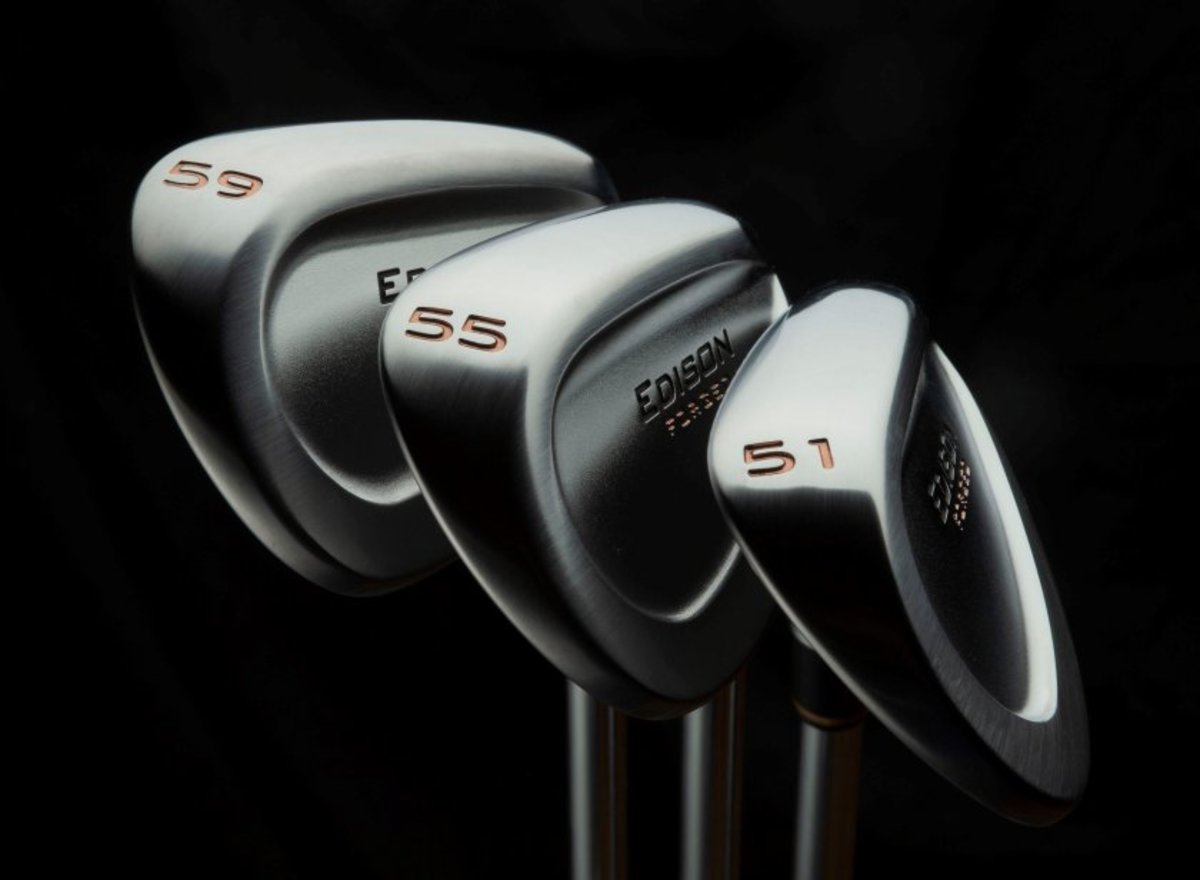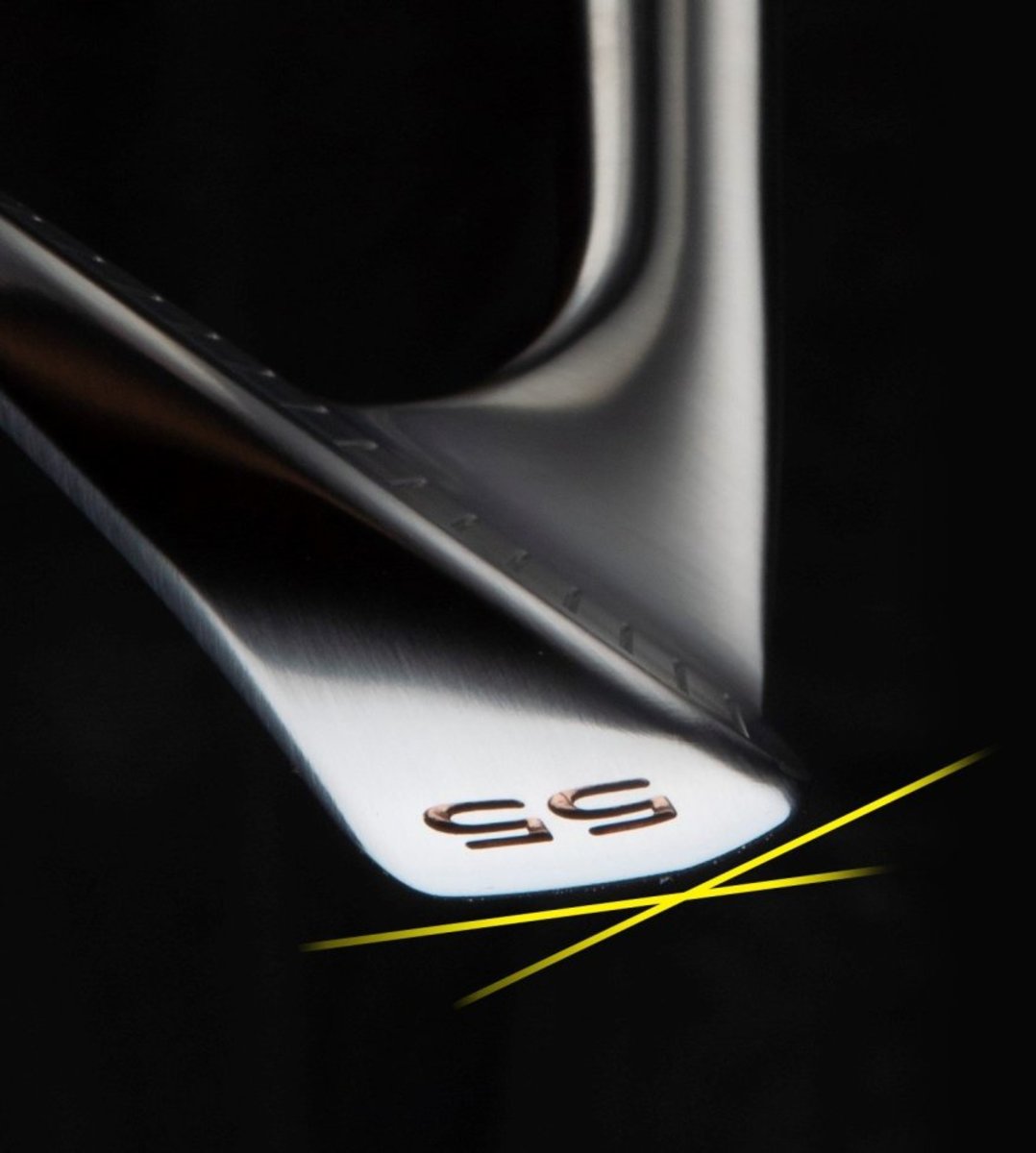Edison Golf: Best new wedges for recreational player

You know the shot all too well. You hit your most lofted wedge and catch it high on the face. The ball drops out of the sky like a beanbag — about 15 yards short of your target. Even tour players aren’t immune. If the ball is sitting up in the rough, even the best players can slide their wedge through the grass and have the ball go nowhere as slo-mo confirms that the ball was high on the face.
Terry Koehler says it’s not all your fault. Part of the problem is the way wedges are designed. And he believes he’s fixed it.
Koehler is a veteran of the golf industry who has been designing wedges for 30 years. He helped create Edison Golf two years ago to design and build forged wedges that he believes will revolutionize the performance that average recreational golfers get from their most lofted clubs.
During the course of his career, Koehler has collected 50,000 golfer profiles and the overwhelming consensus is that people want two things from their wedges: to get consistent distance and to hit the ball lower with more spin. Traditional wedge design — Koehler calls it "tour design" — accomplishes that for only the best players, not everyone else.
And most golfers have become resigned to that fact. “The number one reason for people to buy a new wedge is because their old one is worn out,” Koehler said. “Only 18 percent of wedge buyers are looking for better performance.

“There are a number of recreational golfers who are playing with worn-out wedges who have just given up. They say, ‘I’m just a crappy wedge player. I play all the best wedges and I never see any difference in results.'"
Koehler contends that’s because wedge design hasn’t changed appreciably in 35-40 years. “Everything else in our bags is remarkably different but wedges haven’t changed,” he said.
Koehler has set out with Edison to radically alter that design with a number of differences, particularly with moving mass around the club. First, he created more mass high in the club, the opposite of tour-designed wedges, which have very little mass at the top. Koehler’s design creates what he says is a launch angle 2-4 degrees lower. “The top half of the club must have mass if you’re looking for penetrating trajectory, maximized spin and forgiveness,” he said.
Then, he looked at smash factor, which usually only matters in drivers. But Koehler believes it might be even more important in wedges. “Recreational players hit wedges two or three grooves higher than the Tour player, who has learned to hit the bottom third of the grooves to get consistent distance,” he said.
So, Koehler used robot testing to find the smash factor in traditional wedges in five places: the center of the clubface, and a half-inch high and low, toward the heel and toward the toe. The numbers were about the same across brands in the center and a half-inch low, which has a slightly higher smash factor than the center.
But the numbers dropped off as much as 20 percent a half-inch high along with the heel and toe, which translates to a dramatic loss of distance. In traditional wedges, the difference between a shot that registers the best smash factor and the worst means the ball comes up about 52 feet short.
Koehler increased smash factor in his wedges to a point that the difference between the best smash factor and the worst in the half-inch miss is 21 feet. “In other words, instead of coming up short in the bunker, you have a reasonable putt,” he said.
“The other side of that is because we moved so much mass high in the club, the gear effect increased tremendously. Our (spin) on center hits is about 20 percent better than tour-designed wedges. Average spin around the five spots is double the other wedges. Ours has the same launch angle, the same smash factor, the same spin.”

Tour players wouldn’t play Edison wedges, Koehler said, because they’ve spent thousands of hours experimenting and learning what the ball will do off different parts of the clubface on a traditional wedge.
"I didn’t make a club for the best wedge games," he said. "I made a club to make wedge games better. The best short-game player at any club in America is not as good as the worst short-game player on the Korn Ferry Tour."
Edison clubs can be ordered through the company's website (EdisonWedges.com) and are custom-built in the company’s Fort Worth, Tex., facilities. The company’s performance guarantee states that if customers don’t believe their short games have improved in 60 days, Edison will replace the clubs with any other wedges the customer thinks he will like better.
"Because of what we’ve done to the golf club, we think we’ve done to the tour-designed wedges that we’ve lived with for 50 years, what TaylorMade did to persimmon, Big Bertha did to metalwoods, Adams did to fairway woods and hybrids. We’ve put that kind of performance out to pasture."
Sign up to receive the Morning Read newsletter, along with Where To Golf Next and The Equipment Insider.
